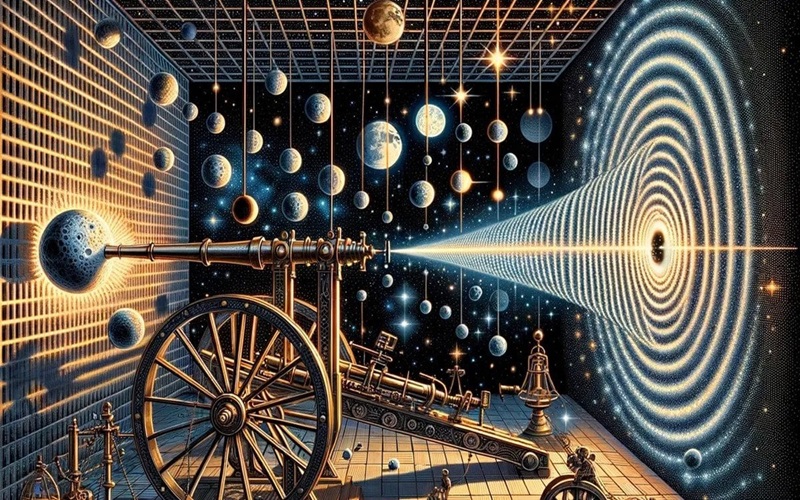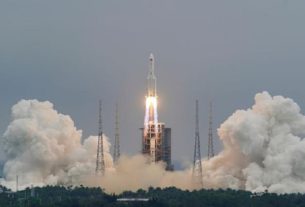Physicists from University College London (UCL) propose a revolutionary theory attempting to unify gravity and quantum mechanics while preserving Einstein’s classic view of space-time. Explanations.
Two approaches
Modern physics is based on two pillars: quantum mechanics and Einstein’s theory of general relativity.
Quantum theory is capable of describing the behavior of subatomic particles. It is based on principles such as quantum superposition and entanglement. According to this scientific theory, particles can exist in several states at once and be instantly linked together, no matter how far apart they are.
For its part, Einstein’s general relativity describes gravity as a curvature of space-time caused by the presence of mass and energy. This works well on cosmic scales, describing how planets, stars and galaxies interact gravitationally.
So, to summarize simply, quantum mechanics explains the behavior of (infinitely small) subatomic particles, while general relativity explains the behavior of matter on cosmic scales.
In search of a “theory of everything”
The problem is that we currently cannot apply these two approaches to situations where quantum scales (very small, like subatomic particles) and relativistic scales (very large, like celestial objects) overlap. In such situations, the two theories produce results that contradict each other. In other words, they seem incompatible.
For example, when trying to apply quantum mechanics to a massive object like a black hole, it leads to paradoxes such as “information loss.” According to quantum theory, information cannot be destroyed, but general relativity suggests that information can be lost in a black hole, creating conflict.
Thus, physicists have long sought a “theory of everything” capable of unifying gravity and quantum mechanics. So far, everyone has failed, which brings us back to this new idea.
A new idea
This “post-quantum theory of classical gravity”, as the theoretical physicists behind it call it, offers an innovative approach to solving this incompatibility problem.
Unlike other approaches that seek to quantify space-time itself, this idea proposes to leave space-time as a classical entity. It tweaks quantum theory, suggesting that subatomic particles can interact with non-quantum spacetime in specific ways.
The theory thus postulates the existence of random fluctuations in space-time. These fluctuations would be larger than classical quantum theory envisioned, making the apparent weight of objects unpredictable when measured with high precision over a period of time.
To test this idea, an experiment was suggested. It involves extremely precise measurement of the weight of a mass over an extended period of time. If the measured fluctuations exceed the predictions of classical quantum theory, this could support the validity of the new theory.
By tackling the problem of information on black holes, this famous postquantum theory could, for example, potentially resolve paradoxes linked to the nature of information in objects absorbed by a black hole.
However, these innovative ideas require in-depth and large-scale experiments to be confirmed. Physicists will therefore have to develop sophisticated experimental methods to measure the predicted fluctuations and thus validate the theory.

Email: ben@satprwire.com Phone: +44 20 4732 1985
Ben has been listening to the technology news for quite some time that he needs just a single read to get an idea surrounding the topic. Ben is our go-to choice for in-depth reviews as well as the normal articles we cover on a normal basis.



